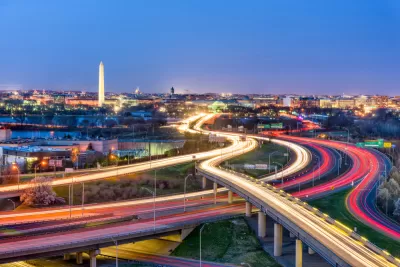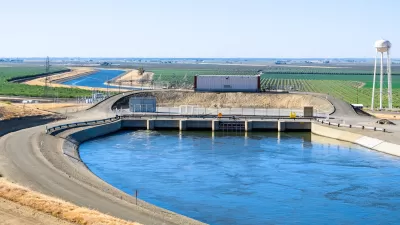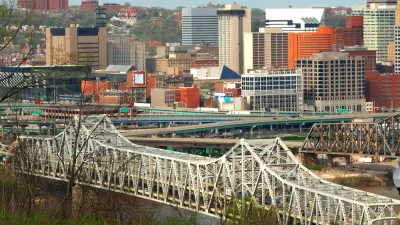The ability of the federal government to fund, and define, infrastructure, owes itself to a history of state and federal leadership at the dawn of the nation's existence.

Writing for The Washington Post, Susan Nagel tells the history of the intense rivalries between political leaders in New York (namely Philip Schuyler) and Virginia (namely George Washington) to control waterborne traffic from the Atlantic to the interior of North America.
The challenges of determining the scope of federal power to fund and build infrastructure, and what kinds of projects fell under that power, originates to Article I, Section 8 of the Constitution, which "endowed Congress with the right to provide for national defense and regulate interstate commerce. But, explains, Nagel, "it did not grant Congress the explicit authority to fund what was then known as 'interior improvements' — or what today is called infrastructure."
Thus, the answers to questions of 1) what constituted infrastructure, 2) who was responsible for it, and 3) what role the federal government should play in developing fell politicians like George Washington, Thomas Jefferson, Alexander Hamilton, James Madison, and James Monroe.
Hanging in the balance back then was the funding of the Erie Canal, the location of Washington, D.C., and the navigability of the Potomac River hung in the balance. In the contemporary United States, the role of the federal government in funding and building infrastructure—and the definition of infrastructure—is again up for debate.
FULL STORY: A conflict among the Founders is still shaping infrastructure debates in 2021

Alabama: Trump Terminates Settlements for Black Communities Harmed By Raw Sewage
Trump deemed the landmark civil rights agreement “illegal DEI and environmental justice policy.”

Study: Maui’s Plan to Convert Vacation Rentals to Long-Term Housing Could Cause Nearly $1 Billion Economic Loss
The plan would reduce visitor accommodation by 25% resulting in 1,900 jobs lost.

Planetizen Federal Action Tracker
A weekly monitor of how Trump’s orders and actions are impacting planners and planning in America.

Federal Homelessness Agency Places Entire Staff on Leave
The U.S. Interagency Council on Homelessness is the only federal agency dedicated to preventing and ending homelessness.

Restoring Northern India’s Himalayan ‘Water Temples’
Thousands of centuries-old buildings protect the region’s natural springs and serve as community wells and gathering places.

Milwaukee to Double Bike Share Stations
Bublr Bikes, one of the nation’s most successful, will add 500 new e-bikes to its system.
Urban Design for Planners 1: Software Tools
This six-course series explores essential urban design concepts using open source software and equips planners with the tools they need to participate fully in the urban design process.
Planning for Universal Design
Learn the tools for implementing Universal Design in planning regulations.
Caltrans
Smith Gee Studio
Institute for Housing and Urban Development Studies (IHS)
City of Grandview
Harvard GSD Executive Education
Toledo-Lucas County Plan Commissions
Salt Lake City
NYU Wagner Graduate School of Public Service





























